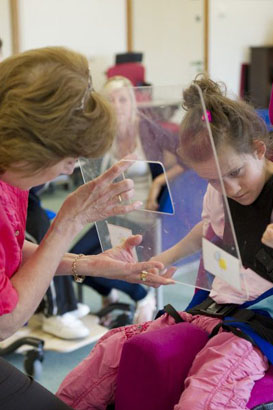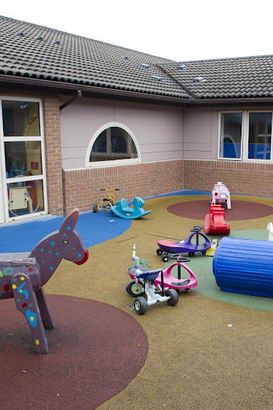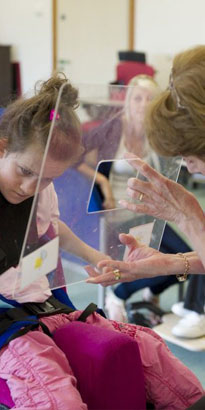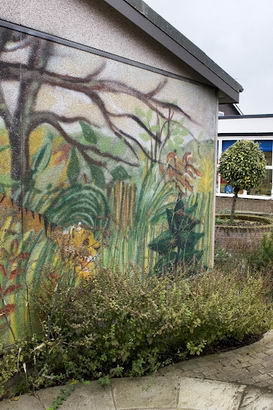
Work to safeguard and promote the welfare of children and young people should be:
- Child-centred.
- Rooted in child development.
- Focused on outcomes for children.
- Holistic in approach.
- Built on strengths (as well as on the identification of difficulties).
- Integrated in approach.
- A continuing process, not an event.
- Informed by evidence.
It should involve both the children and their families, ensure equality of opportunity and provide and review services.
Department for Children, Schools and Families (DCSF), 2010
Effective measures to ensure safeguarding include:
- Being alert to children's safety and welfare.
- Use of the Common Assessment Framework.
- Discussion of concerns about a child's safety and welfare (DCSF, 2010).
- Zero-tolerance of abuse and neglect.
- Crime prevention and safety audits.
- Upholding the human rights of all – children and young people, families and staff.
- Promotion and delivery of choice.
- Quality education and health care planning and delivery for each child or young person.
- Recruitment and selection screening.
- Training and supervision.
- Effective feedback mechanisms.
- Effective quality assurance and governance processes.
(Adapted from Association of Directors of Social Services, 2005)

How far should schools go to safeguard the children and young people in their care? Does technology/CCTV have a role in safeguarding?
In what ways do the issues raised in this article challenge your own view of the way you expect schools to operate in relation to privacy and dignity?
Consider how you can be sure that pupils always receive the best care and staff are confident in raising concerns.
Schools with high awareness and good practice had explicit whistle-blowing procedures, combined with an
open 'no blame' culture and good staff support. Where there was a more rigid, hierarchical approach, poor practice could be
found.
Paul et al 2004
Read the following documents on monitoring safeguarding and the whistle-blowing mechanism.
Monitoring the quality of personal care in school
Notes re relevant teaching standards

In creating an open culture where students and staff will 'speak' out, schools have to move away from blame.
The National Patient Safety Agency (NPSA) (2004) quote Lucien Leak who identified two pervasive false beliefs in organisations:
- The perfection myth: if people try hard enough, they will not make any errors.
- The punishment myth: if we punish people when they make errors, they will make fewer of them.
This tendency was also noted by the Munro Review (Department for Education/Munro, 2011).
The NPSA responds to incidents productively by analysing and tackling the underlying organisational causes.

A culture that is open and fair:
- Has a clear and strong focus on children and young
people's safety. - Has systems and processes to manage and predict risks.
- Ensures staff can easily report incidents.
- Involves and communicates openly with children and young people, their families and others.
- Learns and shares safety lessons using an analysis/solutions approach to incidents.
- Embeds the lessons learned to prevent harm.
(Adapted from NPSA, 2004)
The NPSA (2004) suggests a 'circle of safety' which helps staff to learn how and why incidents have happened and implement solutions. The stages are:
Incidents happen, but the likelihood of them happening again can be reduced through analysing and tackling the root cause.

Critically reflect on how your school responds to major incidents in the context of the four key safeguarding processes – assessment, planning, intervention and reviewing (DCSF, 2010).
Consider how your school's 'whistle-blowing' processes support and feed into this. Analyse what works well and what does not. Identify improvements that could be made organisationally in incident resolution.
Read the National Patient Safety Agency's document Seven Steps to Patient Safety: An overview guide for NHS staff (2004).
Using this model note what you consider to be the key principles. How could these augment your organisational model of 'whistle-blowing' to support children and young people's safety and safeguarding for your school?

Association of Directors of Social Services (2005) Safeguarding Adults: A National Framework of Standards for good practice and outcomes in adult protection work. London: ADSS.
Department for Education/Munro, E. (2011) The Munro Review of Child Protection: Final Report. Norwich: The Stationery Office.
HM Government (2010) Working Together to Safeguard Children: A guide to inter-agency working to safeguard and promote the welfare of children. Annesley: DCSF Publications.
Harris, J. (2011) School surveillance: how big brother spies on pupils, Guardian, (9.6.11).

National Patient Safety Agency (2004) Seven Steps to Patient Safety: An overview guide for NHS staff. London: NPSA.
Ofsted (2012) The Framework for School Inspection: Guidance and grade descriptors for inspecting schools in England under section 5 of the Education Act 2005, from January 2012. London: Ofsted.
Paul, A., Cawson P. and Paton, J. (2004) Safeguarding Disabled Children in Residential Special Schools. London: National Society for the Prevention of Cruelty to Children/Council for Disabled Children.